- Theatre
This is the simplest style, reflecting the seating found in a theatre or cinema with chairs aligned in consecutive straight rows.
Positives:
- All of the seats are facing forwards towards the front of the function room.
- Maximum seated capacity is achieved for the function room.
Negatives:
- The audience is closed in, needing to push past other audience members to enter/exit the seating area.
- Aisles are required to ensure sufficient access to seating area.
- There is no provision for note taking or consumption of plated food and beverage.
- Audience interaction is hindered as audience members don't face each other.
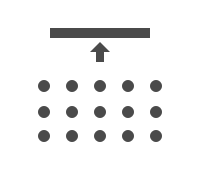
Popular for meetings, annual general meetings, product launches and presentations
- Classroom
This style reflects the seating found in a school or lecture theatre, with chairs and trestle tables aligned in consecutive straight rows.
Positives:
- All of the seats are facing forwards towards the front of the function room.
- Allows for note taking and consumption of plated food and beverage.
Negatives:
- Again the audience is closed in, making it difficult for audience members to enter or exit
- Aisles are required to ensure sufficient access to seating area.
- Seating capacity is reduced by the trestle tables. .
- Audience is less likely to interact as they are not facing each other.
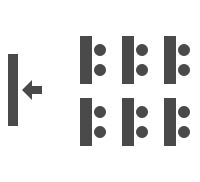
Popular for training, conferences, sales kick –offs and product launches
- U Shape
As the name suggests this style is in the shape of the letter U, with the tables & chairs arranged in an open ended configuration with the audience facing inwards.
Positives:
- The open end allows for a focal point or presentation area.
- Allows presenter to approach and engage with each audience members.
- Audience interaction is enhanced, with audience members facing each other.
Negatives:
- Inefficient use of floor space, with seating capacity reduced.
- A large proportion of the audience are seated side-on to the presentation area.
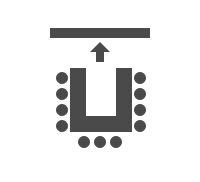
Popular for training, conferences, meetings and workshops
- Hollow Square
This style is similar to U Shape, however there are four sides and no open end, with the audience all facing inwards.
Positives:
- Audience interaction fully enhanced, with audience members all facing each other
- Allows audience to consume plated food and beverage easily
Negatives:
- Seating capacity is reduced
- Does not allow for a main presentation area or focal point.

Popular for discussions
- Boardroom
This style is a smaller version of the Hollow Square or U Shape, however there is a large elongated table, with the audience all facing inwards.
Positives:
- Encourages audience interaction as they all face inwards
Negatives:
- Restricts the position of a presentation area or focal point, typically to the end of the table

Popular for small meetings, one on one interviews, small presentations, team briefings.
- Banquet
This style is similar to a round dinner table, with the audience seated around the circumference facing inwards.
Positives:
- Audience interaction fully enhanced, with audience members all facing each other
Negatives:
- The audience is closed in, needing to push past other audience members to enter/exit the seating area
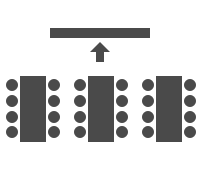
Popular for gala dinners, awards night, Christmas parties, weddings and other informal events.
- Cabaret
This style is similar to Banquet style, however there is an open end, with the audience seated in an arc facing forwards.
Positives:
- The open end allows for a focal point or presentation area.
Negatives:
- Inefficient use of floor space, with seating capacity reduced.
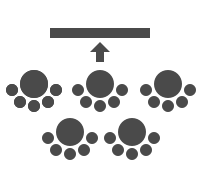
Popular with meetings such as training sessions, awards nights and gala dinners
- Cocktail
This style is unlike any others with no chairs or tables. It is literally standing space.
Positives:
- Most efficient use of floor space, with maximum room capacity available.
- Audience interaction greatly enhanced, with audience members able to freely mingle and roam.
Negatives:
- Audience is standing with no opportunity to sit and rest.
- Does not allow for note taking or consumption of plated food and beverage.

Popular for cocktail parties, weddings, Christmas parties and other social events.




